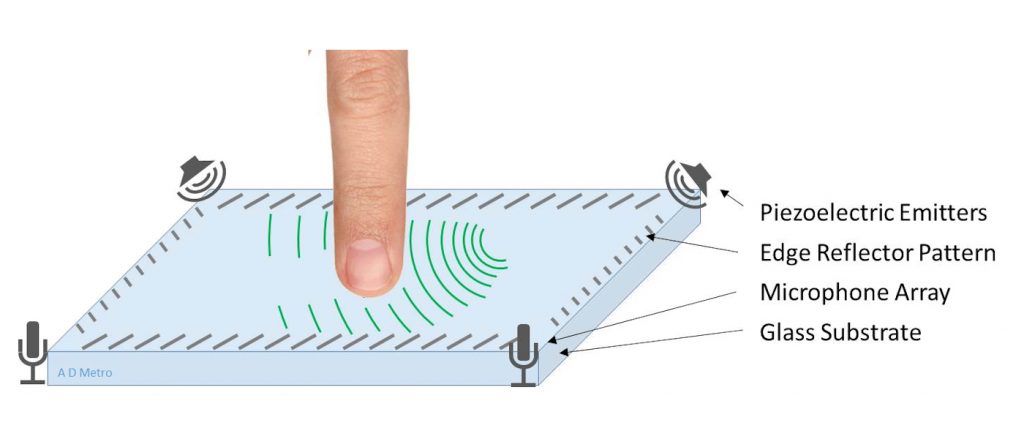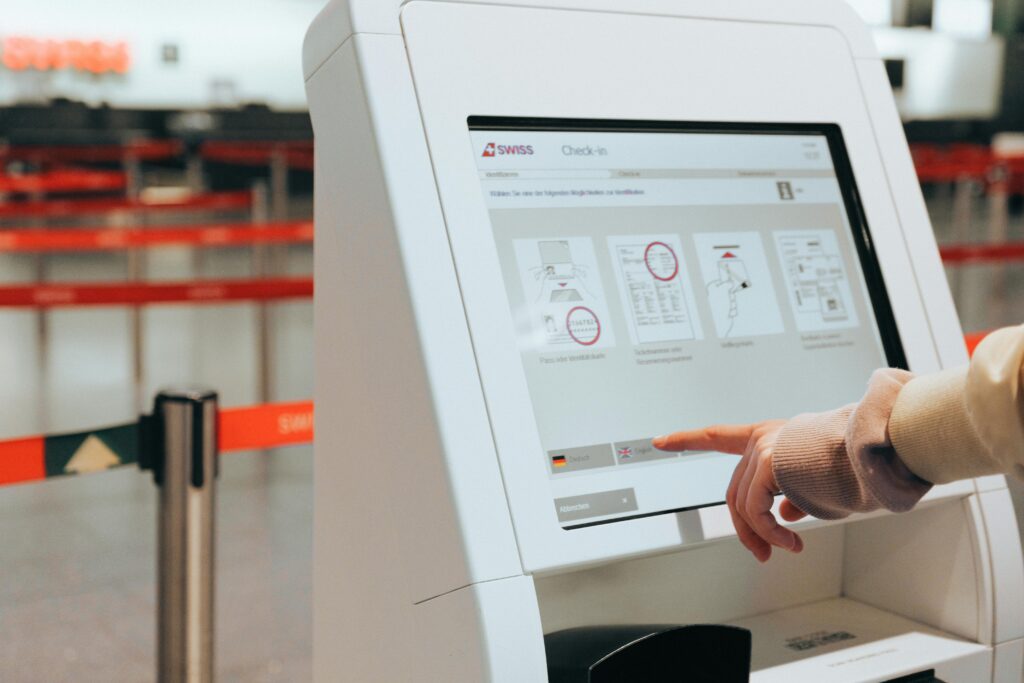With evolving technology, surface acoustic wave (SAW) touch screens have emerged as an excellent choice for touch panels. It is one of the advanced touch screen solutions available in the market. SAW touch screens are integrated with applications utilized in ATMs, amusement parks, public information kiosks, computer-based training and other high traffic indoor environments.
When compared to capacitive and resistive touch screens, SAW technology appears to be superior in several ways. It offers great optical clarity, and higher transmission of light. The all-glass construction with no coatings to wear out contributes to the longer life of this touch screen. This touch panel is highly sensitive and respond quickly. It has a unique ability to be activated by different touch inputs. It can recognize the location swiftly upon touch.
How SAW Touch Screens Work
SAW touchscreens rely upon ultrasonic sound waves and make use of them for touch detection. The surface acoustic wave touch screen consists of one glass sheet with two transmitting transducers, two receivers, and sound wave reflectors placed along the edges of the glass. The transmitting transducers generate ultrasonic waves that travel over the panel surface.
When a finger or stylus makes contact with the touch surface, a portion of the wave is absorbed. This change in the ultrasonic waves registers the position of the touch event and sends this information to the controller for processing. The touchpoint is detected with a drop in the amplitude of the sound wave in corelation with the timing on when the sound was expected to be heard by the microphones.
Features of SAW Touch Screens
- SAW touch screens are good at light transmission as it consists of one glass layer and offers excellent visibility.
- The glass surface is resistant to scratches increasing the durability of SAW touch screens.
- It is relatively easy to make a large size touch screen device with SAW technology.
- SAW touch screens are not affected by external electric noise.
- SAW touch screens detect touch by a finger, gloved hand, or soft-tip stylus but anything with a hard surface like a pen will not work.
However, with SAW touch screens, you must keep in mind that touch detection in this technology can be affected by a large amount of dirt, dust, water droplets etc. therefore, it is not recommended for rugged or outdoor applications.
SAW touch screens offer attractive, simple to implement, and cost-effective solutions. It would be an ideal pick for image clarity and sensor durability. And for a more reliable solution in SAW technology, it would be a good choice go with A D Metro who provides a complete line of Surface Acoustic Wave (SAW) touch screens kits, bundled with a controller and USB or RS232 interface.



